You are using an out of date browser. It may not display this or other websites correctly.
You should upgrade or use an alternative browser.
You should upgrade or use an alternative browser.
Aghost132483
Active member
This is like NDL-40 that produced by IPTN a.k.a. PT DI in 80 era, looks like no coordination between researcher, therefore they build a thing that somebody already built it long decade ago.Busur Geni 90mm.
ffs, Indo MoD, can't you upload in resolutions larger than 480p
NDL-40
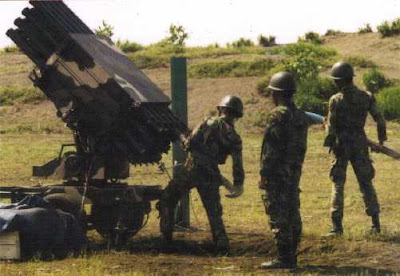
their faces just like salesman rather than radar scientistsManpack Radar
So enemy drone just has to fly slowly?Manpack Radar
The position of hinge and angle of hydraulic arm is very interesting.Busur Geni 90mm.
ffs, Indo MoD, can't you upload in resolutions larger than 480p
That's what layered air defenses are made for. Assuming other layers exist, this would work fine.So enemy drone just has to fly slowly?
I am more interested in what do they do followinf a detection. How do they classify the target or identify its class, or moreover if hostile, what procedures do they follow. How would they integrate this to a SHORAD or Manpads team?
NDL 40 is 70mm in diameter, Busur Geni is 90mm.This is like NDL-40 that produced by IPTN a.k.a. PT DI in 80 era, looks like no coordination between researcher, therefore they build a thing that somebody already built it long decade ago.
NDL-40

They should find something to put this. Komodo + BusurGeni perhaps?
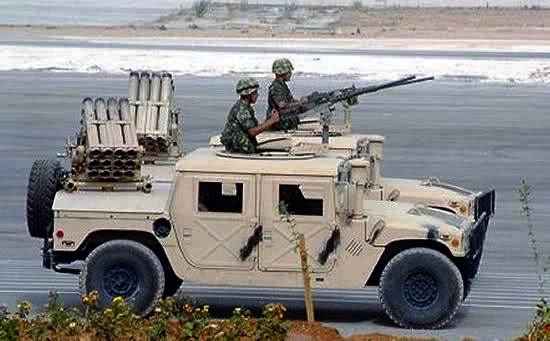
Has this ever been posted before ?

 21stcenturyasianarmsrace.com
21stcenturyasianarmsrace.com
tags: ASEAN, PT Dahana, R-han, rocket artillery, Southeast Asia, SRBM

Via PT Dahana.
Back in the 2010s two state-owned companies, the chemicals producer PT Dahana and space agency LAPAN, developed a solid fuel rocket that could deliver a small payload over short distances. From 2016 until 2018 the RX 450 that was renamed the R-HAN 450 became a tactical rocket with a maximum effective range of 100 kilometers. But its manufacturer PT Dahana hasn’t been very aggressive in enhancing its largest weapon system–there’s no doubt about its role since its very name R-HAN complements the smaller R-HAN 122mm “Grad” rockets. This might change soon but nobody knows when. Although manufacturing large caliber rockets isn’t controversial the applications of the same manufacturing processes can lead to so-called strategic weapons.
At least four Asian countries used the manufacturing of small unguided rockets to establish indigenous programs for surface-to-surface missiles. In some cases these had potential nuclear-capable roles; the missiles can be armed with nuclear warheads if these are available. The countries are Iran, Pakistan, North Korea, and Türkiye. There’s no evidence Indonesia and its armed forces wish to follow the same path but the trend is almost inevitable. In its present variant the R-HAN 450 is a large caliber unguided rocket with dimensions of 460mm x 7200mm. Its appearance conforms to a basic tactical rocket with a quartet of fins around its booster and an elongated airframe. The RX 450 tested by LAPAN in 2020 had a trailer-based erector-launcher that positioned the rocket at a steep angle rather than vertically. Far from sophisticated the R-HAN 450 manufactured by PT Dahana lacks a container and even a transporter vehicle although 6×6 or 8×8 trucks usually suffice for these types of weapons.
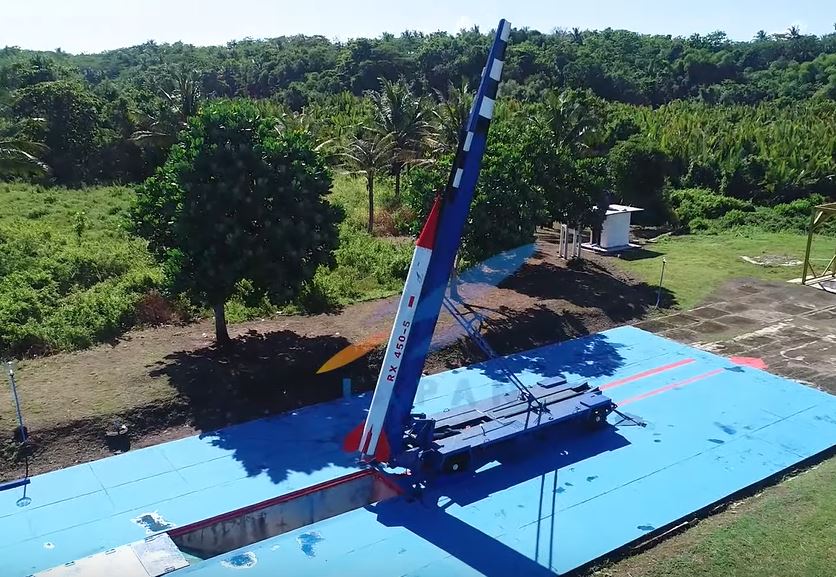
The RX 450-5 is a single stage demonstrator for Indonesia’s space agency, LAPAN. Via LAPAN.
If the R-HAN 450 will evolve in the coming years the outcome leads to a ballistic missile–a large diameter munition with distinct characteristics that separate it from a “dumb” unguided rocket. An important criteria used to be the ballistic missile’s size but recent trends have made this unimportant. Ballistic missiles, at least the single stage models, usually have four sections–the booster, the propellant, the warhead, the guidance system–and PT Dahana seems to have mastered 3/4ths of the manufacturing process. So assembling a single stage ballistic missile is easy enough but the challenge to develop its guidance and navigation tools is a formidable one. These are housed in the missile’s cone-shaped tip (the warhead and fuze are below in their own section) and features a network of portable computers. Sometimes it’s essential to equip the tip of the missile with actuators that steer canards for stabilizing the missile’s flight path as it travels at supersonic speed. To fulfill this requirement PT Dahana needs an external partner able to supply avionics along with systems integration and testing.
Indonesia is rumored to have established a multi-faceted defense cooperation framework with Türkiye that involves the production of different missiles. PT Dahana’s development of the R-HAN 450 appears separate from this alliance but Turkish efforts at enhancing its homegrown missile technology are worth examining. Roketsan’s Khan SRBM, for example, shares many external similarities with the R-HAN 450–even if the Khan is based on a Chinese model–but has larger dimensions and is capable of reaching targets 280 kilometers away. Roketsan’s largest accurized rocket, the 300mm TRG-300 pictured below, is a closer analogue to the R-HAN 450 and is capable of reaching targets 120 km away. The TRG-300 best illustrates how an unguided large diameter battlefield rocket evolves for improved accuracy and flight.
If an Indonesian SRBM is truly in the works the critical details are the dimensions of the airframe and the guidance system installed at the tip. Regardless of how much input foreign partners have the result in all likelihood should resemble the Chinese M20 that has been exported to several countries. There are some risks involved with this program. The greatest is unwanted controversy and external pressure if Jakarta is too ambitious with missile development and this triggers sanctions from the West–Asian countries don’t interfere in these matters. (Indonesia isn’t beholden nor a signatory to the Missile Technology Control Regime/MTCR.)
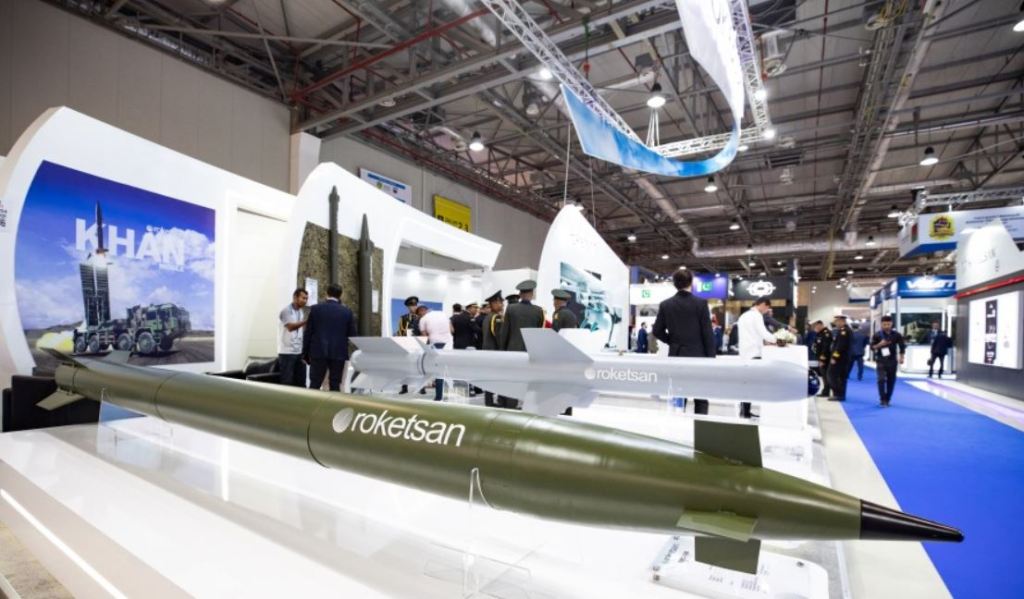
The Roketsan TRG-300 has a maximum range of 120 km. Via Roketsan/ADEX 2022.
The technological aspects of an Indonesian breakthrough in accurized rocket artillery and ballistic missiles will be dramatic. At present there are numerous examples of surface-to-surface munitions that are erasing the boundaries separating rocket artillery and various strategic missiles. Foremost is Lockheed Martin’s Precision Strike Missile (PrSM) that’s smaller than any SRBM yet can fly distances beyond 500 km while armed with a modular payload. A single PrSM is barely 400mm in width and 3,940mm in length, modest proportions compared to contemporary SRBMs, yet boasts extreme flight characteristics. China, Iran, and Israel have almost achieved the same while Indonesia’s military-industrial sector is closer than it thinks. If PT Dahana and the DEFEND ID holdings succeed in mass-producing the R-HAN 450 as an improved munition and then follows it up with an indigenous SRBM this helps along a regional trend in ASEAN: large caliber tactical missiles are now in vogue.
https://21stcenturyasianarmsrace.co...edposts_origin=231743&relatedposts_position=0

Indonesia Is Almost Making Ballistic Missiles
Via PT Dahana. Back in the 2010s two state-owned companies, the chemicals producer PT Dahana and space agency LAPAN, developed a solid fuel rocket that could deliver a small payload over short dist…
Indonesia Is Almost Making Ballistic Missiles
APRIL 7, 2023tags: ASEAN, PT Dahana, R-han, rocket artillery, Southeast Asia, SRBM

Via PT Dahana.
Back in the 2010s two state-owned companies, the chemicals producer PT Dahana and space agency LAPAN, developed a solid fuel rocket that could deliver a small payload over short distances. From 2016 until 2018 the RX 450 that was renamed the R-HAN 450 became a tactical rocket with a maximum effective range of 100 kilometers. But its manufacturer PT Dahana hasn’t been very aggressive in enhancing its largest weapon system–there’s no doubt about its role since its very name R-HAN complements the smaller R-HAN 122mm “Grad” rockets. This might change soon but nobody knows when. Although manufacturing large caliber rockets isn’t controversial the applications of the same manufacturing processes can lead to so-called strategic weapons.
At least four Asian countries used the manufacturing of small unguided rockets to establish indigenous programs for surface-to-surface missiles. In some cases these had potential nuclear-capable roles; the missiles can be armed with nuclear warheads if these are available. The countries are Iran, Pakistan, North Korea, and Türkiye. There’s no evidence Indonesia and its armed forces wish to follow the same path but the trend is almost inevitable. In its present variant the R-HAN 450 is a large caliber unguided rocket with dimensions of 460mm x 7200mm. Its appearance conforms to a basic tactical rocket with a quartet of fins around its booster and an elongated airframe. The RX 450 tested by LAPAN in 2020 had a trailer-based erector-launcher that positioned the rocket at a steep angle rather than vertically. Far from sophisticated the R-HAN 450 manufactured by PT Dahana lacks a container and even a transporter vehicle although 6×6 or 8×8 trucks usually suffice for these types of weapons.

The RX 450-5 is a single stage demonstrator for Indonesia’s space agency, LAPAN. Via LAPAN.
If the R-HAN 450 will evolve in the coming years the outcome leads to a ballistic missile–a large diameter munition with distinct characteristics that separate it from a “dumb” unguided rocket. An important criteria used to be the ballistic missile’s size but recent trends have made this unimportant. Ballistic missiles, at least the single stage models, usually have four sections–the booster, the propellant, the warhead, the guidance system–and PT Dahana seems to have mastered 3/4ths of the manufacturing process. So assembling a single stage ballistic missile is easy enough but the challenge to develop its guidance and navigation tools is a formidable one. These are housed in the missile’s cone-shaped tip (the warhead and fuze are below in their own section) and features a network of portable computers. Sometimes it’s essential to equip the tip of the missile with actuators that steer canards for stabilizing the missile’s flight path as it travels at supersonic speed. To fulfill this requirement PT Dahana needs an external partner able to supply avionics along with systems integration and testing.
Indonesia is rumored to have established a multi-faceted defense cooperation framework with Türkiye that involves the production of different missiles. PT Dahana’s development of the R-HAN 450 appears separate from this alliance but Turkish efforts at enhancing its homegrown missile technology are worth examining. Roketsan’s Khan SRBM, for example, shares many external similarities with the R-HAN 450–even if the Khan is based on a Chinese model–but has larger dimensions and is capable of reaching targets 280 kilometers away. Roketsan’s largest accurized rocket, the 300mm TRG-300 pictured below, is a closer analogue to the R-HAN 450 and is capable of reaching targets 120 km away. The TRG-300 best illustrates how an unguided large diameter battlefield rocket evolves for improved accuracy and flight.
If an Indonesian SRBM is truly in the works the critical details are the dimensions of the airframe and the guidance system installed at the tip. Regardless of how much input foreign partners have the result in all likelihood should resemble the Chinese M20 that has been exported to several countries. There are some risks involved with this program. The greatest is unwanted controversy and external pressure if Jakarta is too ambitious with missile development and this triggers sanctions from the West–Asian countries don’t interfere in these matters. (Indonesia isn’t beholden nor a signatory to the Missile Technology Control Regime/MTCR.)

The Roketsan TRG-300 has a maximum range of 120 km. Via Roketsan/ADEX 2022.
The technological aspects of an Indonesian breakthrough in accurized rocket artillery and ballistic missiles will be dramatic. At present there are numerous examples of surface-to-surface munitions that are erasing the boundaries separating rocket artillery and various strategic missiles. Foremost is Lockheed Martin’s Precision Strike Missile (PrSM) that’s smaller than any SRBM yet can fly distances beyond 500 km while armed with a modular payload. A single PrSM is barely 400mm in width and 3,940mm in length, modest proportions compared to contemporary SRBMs, yet boasts extreme flight characteristics. China, Iran, and Israel have almost achieved the same while Indonesia’s military-industrial sector is closer than it thinks. If PT Dahana and the DEFEND ID holdings succeed in mass-producing the R-HAN 450 as an improved munition and then follows it up with an indigenous SRBM this helps along a regional trend in ASEAN: large caliber tactical missiles are now in vogue.
https://21stcenturyasianarmsrace.co...edposts_origin=231743&relatedposts_position=0
MTCR is usually the de-facto agreement that you are ought to sign before receiving any tech or equipment that is to be used in production of BM or anything that can be made into BM (Space rockets, artillery rocket etc.). So, not having signed is not a blessing here but dramatically reduces options for such equipments (and also missile components).Has this ever been posted before ?

Indonesia Is Almost Making Ballistic Missiles
Via PT Dahana. Back in the 2010s two state-owned companies, the chemicals producer PT Dahana and space agency LAPAN, developed a solid fuel rocket that could deliver a small payload over short dist…21stcenturyasianarmsrace.com
Indonesia Is Almost Making Ballistic Missiles
APRIL 7, 2023
tags: ASEAN, PT Dahana, R-han, rocket artillery, Southeast Asia, SRBM

Via PT Dahana.
Back in the 2010s two state-owned companies, the chemicals producer PT Dahana and space agency LAPAN, developed a solid fuel rocket that could deliver a small payload over short distances. From 2016 until 2018 the RX 450 that was renamed the R-HAN 450 became a tactical rocket with a maximum effective range of 100 kilometers. But its manufacturer PT Dahana hasn’t been very aggressive in enhancing its largest weapon system–there’s no doubt about its role since its very name R-HAN complements the smaller R-HAN 122mm “Grad” rockets. This might change soon but nobody knows when. Although manufacturing large caliber rockets isn’t controversial the applications of the same manufacturing processes can lead to so-called strategic weapons.
At least four Asian countries used the manufacturing of small unguided rockets to establish indigenous programs for surface-to-surface missiles. In some cases these had potential nuclear-capable roles; the missiles can be armed with nuclear warheads if these are available. The countries are Iran, Pakistan, North Korea, and Türkiye. There’s no evidence Indonesia and its armed forces wish to follow the same path but the trend is almost inevitable. In its present variant the R-HAN 450 is a large caliber unguided rocket with dimensions of 460mm x 7200mm. Its appearance conforms to a basic tactical rocket with a quartet of fins around its booster and an elongated airframe. The RX 450 tested by LAPAN in 2020 had a trailer-based erector-launcher that positioned the rocket at a steep angle rather than vertically. Far from sophisticated the R-HAN 450 manufactured by PT Dahana lacks a container and even a transporter vehicle although 6×6 or 8×8 trucks usually suffice for these types of weapons.

The RX 450-5 is a single stage demonstrator for Indonesia’s space agency, LAPAN. Via LAPAN.
If the R-HAN 450 will evolve in the coming years the outcome leads to a ballistic missile–a large diameter munition with distinct characteristics that separate it from a “dumb” unguided rocket. An important criteria used to be the ballistic missile’s size but recent trends have made this unimportant. Ballistic missiles, at least the single stage models, usually have four sections–the booster, the propellant, the warhead, the guidance system–and PT Dahana seems to have mastered 3/4ths of the manufacturing process. So assembling a single stage ballistic missile is easy enough but the challenge to develop its guidance and navigation tools is a formidable one. These are housed in the missile’s cone-shaped tip (the warhead and fuze are below in their own section) and features a network of portable computers. Sometimes it’s essential to equip the tip of the missile with actuators that steer canards for stabilizing the missile’s flight path as it travels at supersonic speed. To fulfill this requirement PT Dahana needs an external partner able to supply avionics along with systems integration and testing.
Indonesia is rumored to have established a multi-faceted defense cooperation framework with Türkiye that involves the production of different missiles. PT Dahana’s development of the R-HAN 450 appears separate from this alliance but Turkish efforts at enhancing its homegrown missile technology are worth examining. Roketsan’s Khan SRBM, for example, shares many external similarities with the R-HAN 450–even if the Khan is based on a Chinese model–but has larger dimensions and is capable of reaching targets 280 kilometers away. Roketsan’s largest accurized rocket, the 300mm TRG-300 pictured below, is a closer analogue to the R-HAN 450 and is capable of reaching targets 120 km away. The TRG-300 best illustrates how an unguided large diameter battlefield rocket evolves for improved accuracy and flight.
If an Indonesian SRBM is truly in the works the critical details are the dimensions of the airframe and the guidance system installed at the tip. Regardless of how much input foreign partners have the result in all likelihood should resemble the Chinese M20 that has been exported to several countries. There are some risks involved with this program. The greatest is unwanted controversy and external pressure if Jakarta is too ambitious with missile development and this triggers sanctions from the West–Asian countries don’t interfere in these matters. (Indonesia isn’t beholden nor a signatory to the Missile Technology Control Regime/MTCR.)

The Roketsan TRG-300 has a maximum range of 120 km. Via Roketsan/ADEX 2022.
The technological aspects of an Indonesian breakthrough in accurized rocket artillery and ballistic missiles will be dramatic. At present there are numerous examples of surface-to-surface munitions that are erasing the boundaries separating rocket artillery and various strategic missiles. Foremost is Lockheed Martin’s Precision Strike Missile (PrSM) that’s smaller than any SRBM yet can fly distances beyond 500 km while armed with a modular payload. A single PrSM is barely 400mm in width and 3,940mm in length, modest proportions compared to contemporary SRBMs, yet boasts extreme flight characteristics. China, Iran, and Israel have almost achieved the same while Indonesia’s military-industrial sector is closer than it thinks. If PT Dahana and the DEFEND ID holdings succeed in mass-producing the R-HAN 450 as an improved munition and then follows it up with an indigenous SRBM this helps along a regional trend in ASEAN: large caliber tactical missiles are now in vogue.
https://21stcenturyasianarmsrace.co...edposts_origin=231743&relatedposts_position=0
And article seems to flatter Dhana a little, and crush Lapan, or whether i took it a little personal for having acquintance in one. To me it seems like Lapan has developed the 450mm rocket engine and Dhana made it into what's so far looking like, but far from being, an artillery rocket.
Nevertheless, a proper funding is necessary for such programs and i don't believe a company may handle it all or self-fund, without any proper background in BMs. Appearantly it is possible to make unguided artillery rockets of various diameters making use of water pipes and this is not a baseline example/reference for future development.
And article seems to flatter Dhana a little, and crush Lapan, or whether i took it a little personal for having acquintance in one. To me it seems like Lapan has developed the 450mm rocket engine and Dhana made it into what's so far looking like, but far from being, an artillery rocket.
I think this is a legit artillery rocket, maybe not in the league of M20/Iskander/Hyunmoo but more in the league of FROG-7 or Zelzal series battlefield artillery rocket from Iran.
Dahana is I believe also involved in the Rhan122b payload segment, so it's logical to credit Dahana for their effort to develop Rhan 450 payload, LAPAN is a civilian agency resposible only for the motor and guidance.
There's a side development for the "guided" RHan-450 control and guidance system. The RX200TC, with control finNevertheless, a proper funding is necessary for such programs and i don't believe a company may handle it all or self-fund, without any proper background in BMs. Appearantly it is possible to make unguided artillery rockets of various diameters making use of water pipes and this is not a baseline example/reference for future development.
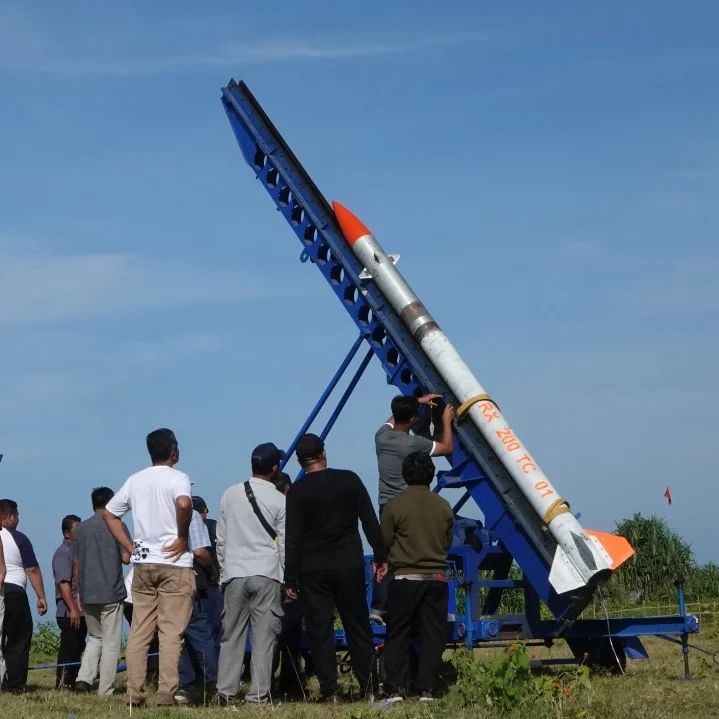
yandex image translation:
Last edited:
I think this is a legit artillery rocket, maybe not in the league of M20/Iskander/Hyunmoo but more in the league of FROG-7 or Zelzal series battlefield artillery rocket from Iran.
There's a side development for the "guided" RHan-450 control and guidance system. The RX200TC, with control fin

yandex image translation:
View attachment 63212
Regarding RX200TC, there's a new (I believe so) video that was posted by an ORPA researcher a month ago, showing the launch, noted that the control fin (??) saved the missile from plunging back into the ground.
I don't know if this is a new launch or old launch but newly released video. Btw here it is:
PS : I think this is a new launch, notice the lack of vegetation around the launch site, and compare to the first firing of RX-200TC Seri 01 which has a lot of green grass all around it (for comparison)
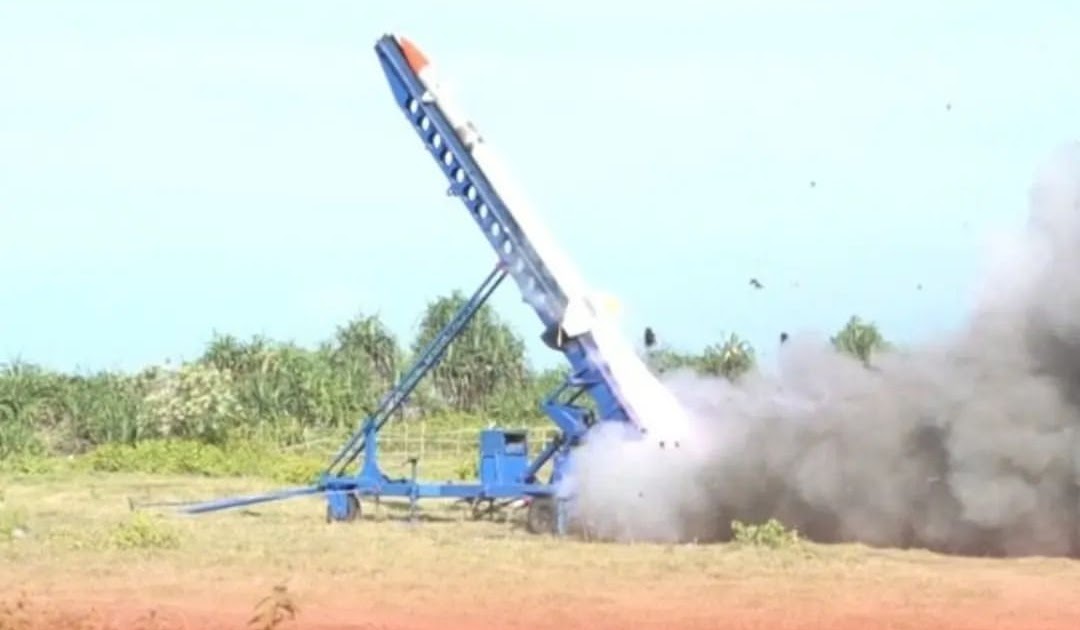
Indonesia’s PTDI Considers Chinese Assembly Plant After Securing Sales
SINGAPORE—PT Dirgantara Indonesia (PTDI) is considering setting up a final assembly line in China as the Indonesian aircraft manufacturer agreed sales of 25 N219 turboprop aircraft to the country. PTDI has signed an agreement with the Aksu Municipal Government of Xinjiang Uygur Autonomous Region...
Indonesia’s PTDI Considers Chinese Assembly Plant After Securing Sales | Aviation Week Network
PT Dirgantara Indonesia is considering setting up a final assembly line in China after agreeing on sales of 25 N219 turboprop aircraft to the country.
From all i see, these guys are doing some progress with minimalistic budget. The motor, controls, actuators (or guidance for latter) or making of the rocket fuel is the most challenging part while LAPAN is not taking enough credit there.There's a side development for the "guided" RHan-450 control and guidance system. The RX200TC, with control fin
Are those still around in any conventional army (excluding Iran), damn.FROG-7 or Zelzal series battlefield artillery rocket from Iran.
Are those still around in any conventional army (excluding Iran), damn.
It doesn't matter, if Pindad could mass-produce Rhan 450, and Dahana (who I believe will be responsible for mass-producing the rocket motor) it would still be relevant to our needs. After all, it's the refinement of those solid rocket motors that is the main goal.
In the field of developing key rocket technology, in 2023-2024 ORPA will develop propellants (rocket fuel) that have higher energy, composite rocket tubes, and heat insulation using local materials. In that year, it is also planned that there will be training for prospective trainers (ToT) regarding solid rocket motor production technology from PRTR to the defense industry. At the same time, design and simulation of the rocket control system was carried out, in accordance with partners' requests to develop a rocket with a longer range. It is planned that in 2025 to 2027, this design will be implemented in the RHAN450 prototype developed by the defense industry.






